Prevent 11 types of hard-to-detect security crimes
Network administration - Antivirus software and firewalls are sometimes not enough to ensure you are safe. This is the way to distract hidden attacks as well as attempts with bad intrigue to steal user data.
Indeed in the information society as it is today, there are many anti-virus software and firewalls created to protect users' computers from being safe. However, that is not enough, the cybercrime attack techniques are becoming more sophisticated and often preceded by the protection techniques contained in security software. So what do users have to do to avoid these sophisticated attacks? In this article, we provide you with 11 forms of the most malicious and most sophisticated attacks recently, along with tips to help you avoid or reduce the impact of these attacks.
1. The URL shortens
Most tweets and lots of other messages have links shortened by services like Bit.ly, Tr.im and Goo.gl. These URL aliases are indeed very useful, but they are also potentially risky: Because the URLs do not provide a destination destination, attackers can exploit them to send you malicious code pages.
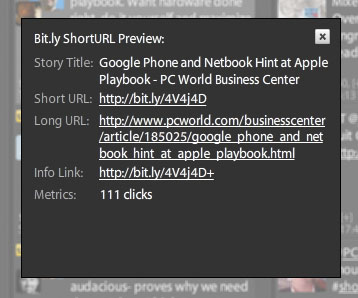
Using Twitter client: Programs like TweetDeck contain options within their settings page to pre-display shortened URLs. When this feature is enabled, if you click on the shortened URL inside a tweet, you will see a screen appear, which will display the title of the landing page as well as the complete URL and number of others. Click on that link. With this information, you can make the right decision about whether to click on the link and visit that website.
URL-preview plug-in settings: Some browser plug-ins and services can perform the same preview function as above. When you create a shortened address with the TinyURL service (for example), you can create a preview version so that the recipient can see the destination they will access before clicking. Conversely, if you're wondering about accessing the TinyURL link, you can enable its preview service to see the complete URL. To make the TinyURL preview work, you need to enable cookies in your browser.
ExpandMyURL and LongURLPlease, both provide browser or applet plug-ins that verify the safety of a complete URL behind shortened links from all known URL shortening services. However, instead of changing the shortened links to complete URLs, ExpandMyURL checks the landing pages in the background and marks the green for short-written URLs if they are harmless URLs.
Google, Goo.gl URL shortening service, also provides security by automatically scanning the destination URL to detect and identify malicious websites, and then alert users when shortened URLs can be harmful for users. However, Goo.gl has limitations that it only works with other Google products and services.
2. Harvest data from your Profile
Some personal data that you share on social networks, such as the school you studied in high school, the place of birth or the birth date, often resembles the same entries used in 'confidential' questions for banks and websites. If an attacker obtains this information, they can access your most sensitive accounts.
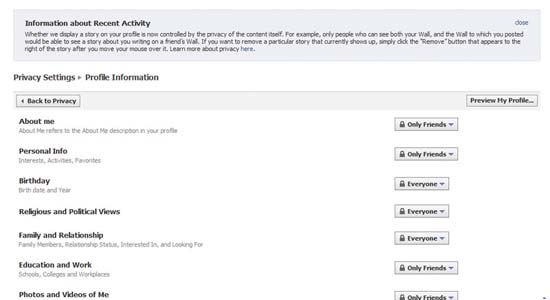
Check security settings on Facebook : After registering an account on Facebook, click on the menu bar and select Privacy Settings.
This setting will allow you to choose who can view your personal information. You can hide your details with everyone and only allow your network members to view them, or you can open the door and allow people to view your information. me In addition, you can set the privacy level for each component for your profile - such as birth date, religion and political views, photos you post or status updates.
Do not accept all friend requests from strangers : Over time, you will receive friend requests from someone you don't know. If you need to protect your personal information, then you should not accept these requests.
Be cautious when sharing : It is necessary to consider removing valuable information, such as birth dates and hometowns, from your profile. You should also consider carefully before joining and fun phrases of Facebook - these questions seem innocent and quite interesting but it is also the clue that criminals can exploit.
Page 2: Impersonate social networks
3. Impersonate social networks
Whether you connect with someone who is authentic and trustworthy on Facebook, LinkedIn, Twitter, or other social networks. But the danger is still stalking you because attackers can still take control of this person's online personal information and exploit that trust.
Be wary of bad scams who impersonate in the name of friends : An attacker can hijack the control of one of someone's online network accounts among your close friends via malware, or carefully. Some tricks, then use these stolen accounts to spam you, steal your personal data, or even cheat to get your money. When attackers hijack control of a group member account of your friends (this member cannot access their account at this time), they can send you notifications urging, pleading like: ' Help me , I'm in HCM and lose my wallet. You can send me some money to buy a plane ticket to Hanoi . ' Or they may incite you to click on certain links, thereby infecting your computer or compromising your personal account.
4. Snooping on the web
Today, entertainment, sales or some social organizations are online, so Internet users can be traced. The book you have read, the movie you have rented, the person you are dealing with, the shopping items you buy or other details are forming a personal data warehouse for search engines, homes. advertising as well as anyone who wants to snoop on your computer.
Working with companies you trust : You need to know the privacy policies of the websites and services you interact with so you can trust that you can protect sensitive information. mine.
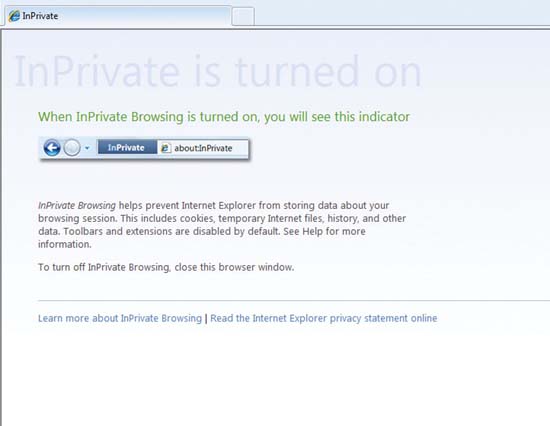
Use private browsing mode : Current browser versions such as Internet Explorer, Firefox, Safari and Chrome both offer private browsing mode. Features like InPrivate Browsing in IE 8, Private Browsing in Firefox 3.5 can ensure information such as site history, form data, searches, passwords and other information of the current session is no longer saved. on the browser cache or password protection when you turn off the browser.
Page 3: Fake software
5. Fake software
Sure you know a lot about fake attacks, impostors can use decoys like an email designed as if it was sent from a bank or a financial institution to hook users. Fake software often comes with fake attacks to trick you into installing bad antivirus software on your computer by 'warning' that your computer may be infected with a virus .
Don't touch the bait : Stop and think. For example, if you have not installed any security software on your computer, then where does this notification come from? If you already have a security utility to identify and lock malicious software, why does it tell you to buy or download additional software to fix the infection that your computer is having? Be familiar with the warnings of the security software you are using so that you can easily identify the fake warning.
No panic : You should have malware protection available on your side. If you don't have security and security software, you need to worry about your computer, then scan your system with Trend Micro, HouseCall, or free online malware scanners. Run Microsoft's Malicious Software Removal Tool. When you complete your scan, whether you discover a problem or not, you should find yourself an anti-malware application and install it on your computer to protect your computer in the future.
Browser upgrade : Such fake notifications will prompt you to access a number of dishonest websites, which can make your system infiltrate to a worse extent. The current versions of most web browsers and many Internet security suites have built-in anti-phishing protection, to warn you about fake sites. However, you need to keep in mind that the databases that these filters use are updated regularly to identify fake sites, but they are still not secure enough, so you need to pay attention. to the URLs you may visit. To help you make a faster decision, Internet Explorer 8 and Chrome both bold the original domain name in the URL so you can know whether the domain name that you will access is trusted.
6. Trojan Horse
Some attacks will send spam messages to your mobile phone to assume that they are provided from certain network providers or financial institutions. These Trojan horse messages may lead you directly to the malicious site or may require permission to install an upgrade that can change the settings on the phone, which allows an attacker to capture the username. , password and other sensitive information from your device.
Get access to sources that contain updates and news : If you receive a message sent from a trusted source, however, it directs you to install or upgrade a software, or initialize it. During the installation process or have permissions requirements to continue, then exit the application to read the message immediately and contact the service provider's customer service department to verify the information. Is that valid or not?
You can receive a lot of emails due to requests from companies that you still have contact with, but reputable companies will not send you links and updates due to requests. by email. Similarly, reputable companies will not send unsolicited messages to mobile devices to ask you to install an upgrade, or download some new software.
Attackers often tend to trick you into passing your trust in wireless service providers as well as financial institutions. Therefore, you should not blindly accept software upgrades or download applications to your mobile phone.
Page 4: Losing laptop, data is revealed
7. Losing laptop, data is revealed
The portable capabilities of laptops and mobile phones make them convenient, but this also means that these devices are easy to lose or steal. If your laptop or mobile phone falls into the wrong hands, these people can access the sensitive data you have stored in it.
Data encryption : You can use a utility like Microsoft's BitLocker to encrypt data. However, BitLocker is only available for Windows Vista and Windows 7, even in Ultimate and Enterprise versions only in these two operating systems (also available in Windows Server 2008).
However, BitLocker is not the only program you can use. In addition to this program, it is possible to use other encryption programs, such as TrueCrypt (provided free under open source registration) to protect your data against bad guys.
However, the data encryption is like a double-edged sword. The biggest problem is making sure you always remember the encryption key. If you lose your encryption key, then you will see how hard it is to encode it again.
Use strong passwords : If encryption seems more complicated than what it is worth, you can use strong passwords to protect your computer. The longer the password, the better, the more characters will make unlocking more time consuming. You should also mix multiple symbols by replacing numbers and special characters for letters. For example, instead of using an original ' tenban ' password, you can use ' tenb @ n '. It's a cluster that you can easily remember, but this passphrase contains many components that will make cracking more difficult.
There should also be a secure password to log in to your user account even if only you use that computer. Note, although strong passwords can be difficult to guess, you can still be attacked the other way: An attacker who owns your computer can find many ways to bypass this protection.
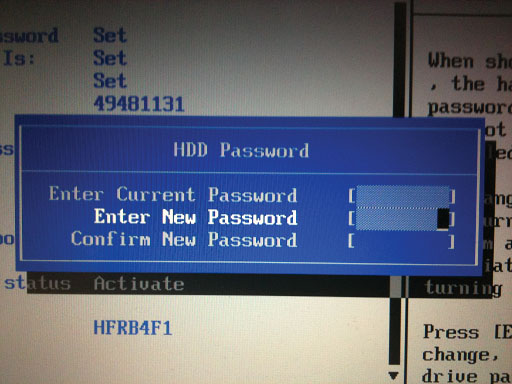
Lock your BIOS : By executing a BIOS password or hard drive password (or both), you can be sure that no one can start your computer. With the BIOS in the systems, the initial boot screen that the computer displays usually indicates which keys you need to press to access the BIOS settings.
When accessing the BIOS settings page, look for security settings. These settings may vary between brands, but it can be said that the BIOS settings are quite simple.
You can set up a master password to prevent others from starting your computer or changing BIOS settings. This option has different names, but usually they are still called ' Administrator password ' or ' Supervisor password '. If you want, you can also set the hard drive password, which will prevent access to the hard drive until the correct password is entered.
There may be many ways to bypass these passwords, but setting up the correct passwords will create an additional layer of security and may hinder all attacks including attacks. most professional.
Use recovery service : If your device is lost or stolen you often want to regain it; however, if you cannot find your hardware, at least you should delete the data on it. Some vendors, such as HP and Dell, offer both.
Both Notebook and Restore tracing services from HP and Dell are based on Absolute Software's Computrace technique. When you report a laptop that is protected by one of these lost or stolen services, a small application running in the background in that computer will wait until the computer is connected to the network. Internet and contact the testing center to exchange location information to search for computers. If you can't find a lost or stolen laptop that protects this service, or if the data on the system is very sensitive, these services can remotely erase all data on the computer. there.
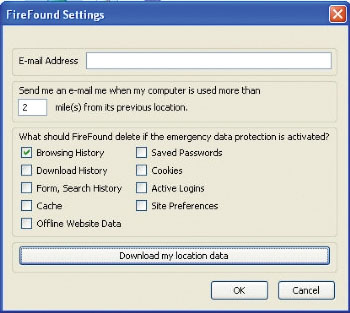
Although less comprehensive, free utilities like add-on FireFound for Firefox also have similar features. You can configure FireFound so that it can automatically delete passwords, browser logs and cookies.
Mobile phones can also keep a significant amount of sensitive data. However, users can use Find My iPhone service, part of MobileMe service of Apple and Mobile Defense for Android mobile phones to perform traces and delete data remotely. Both MobileMe and Mobile Defense can use the GPS capabilities included in the phones to indicate the device's current location and forward that information to you.
Page 5: Fake Wi-Fi Hotspot
8. Fake Wi-Fi Hotspots
Free Wi-Fi networks may appear more and more. However, attackers sometimes set up unique Wi-Fi networks to lure users to connect. When someone connects to this fake wireless network, they can capture their computer traffic and collect the sensitive information you sent, such as username and password.
Network name verification : If you want to connect to the Internet at a certain café or public location, find out the vendor's network SSID. SSID is the name of the wireless network; it is broadcast to your computer so that it can detect the network and is the name that appears on your list of available networks.
The SSID for a network at a McDonald's restaurant might be " mickeyds ". Phishers can set up a fake wireless router in the vicinity of McDonald's location and set up an SSID of " mcdwifi " or " mickeyds2 ". Your computer will then display both of these networks in the list - even if the fake network has a stronger signal strength and appears above the list. Make sure you are smart enough to recognize the official network.
When in doubt, don't trust any network to open. Most wireless networks are not encrypted - and so are unprotected networks. This means that data transmitted between computers and wireless routers is vulnerable to eavesdropping or being stolen by another component that appears within the wireless network. Unless you have a secure connection, such as a VPN (virtual private network) connection to the network at the office, you should avoid using public Wi-Fi networks to log sensitive accounts ( such as email or bank account); limited, only use the Internet in public places to read newspapers and check for news on weather forecasts and traffic reports.
9. Weak Wi-Fi security
If you are cautious, you can secure your wireless network with a password to prevent strangers from accessing and using your Internet connection. However, password protection here may not be enough .
Use strong encryption : There are several types of Wi-Fi network encryption and there are some differences between them. WEP (Wired Equivalent Privacy) encryption is the most typical type of encryption and has been deployed on wireless networks. If you have set a WEP password for your Wi-Fi network, you have taken a step forward in protecting your network from being compromised.
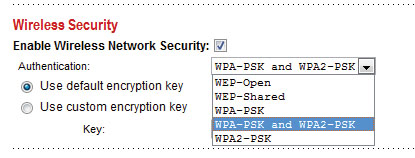
However, WEP is still vulnerable to cracking: There are many tools that allow you to help an attacker crack your code and access your network in a matter of minutes. However, WEP is still very useful because most wireless attackers with bad intentions are not professional enough to be able to crack it, but to be safer you should use WPA (Wi-Fi). Protected Access) or WPA2. These two types of encryption can overcome WEP's weaknesses and provide stronger protection.
Log in to the router's console and look for wireless security settings. Here, enable encryption and select WPA or WPA2. Enter the password, save the settings and restart the router - you can now start surfing the web more safely.
10. Backup data is dangerous
You may know that you should backup your data, especially files that cannot be replaced like family photos. However, while storing backups on an external hard drive or writing them to a CD or DVD for example and keeping them somewhere, it allows you to recover files easily if the hard drive fails or broken, but this method also creates a portable storage of sensitive data - and so is easy to lose or stolen.
Encrypt backup data : Need to use a backup utility that allows you to protect your data by encryption or at least a password, to prevent unauthorized access. If you want a more secure step, put your backup files on an encrypted USB external device like Seagate Maxtor BlackArmor. You can also choose external drives with fingerprint scanners like Apricorn Aegis Bio or LaCie d2 Safe.
Using online backup service : If you like, you can use online storage solution like Microsoft Windows Live SkyDrive, this service gives you 25GB of free storage, data security for you by love need username and password to access. However, copying 25GB of data and updating it regularly through SkyDrive can take a long time and create a cumbersome process. For a small fee, you can use another service like Mozy, which includes tools that automate the backup process and make sure your data is backed up regularly.
11. Software is not patched (not just Windows)
Microsoft products have long been favorite addresses for malware, but the company has entered and fought these attacks by searching for weak links in the security chain. Today, third-party software such as Adobe Reader is also a means for an attacker to take advantage of it to hack into your computer.
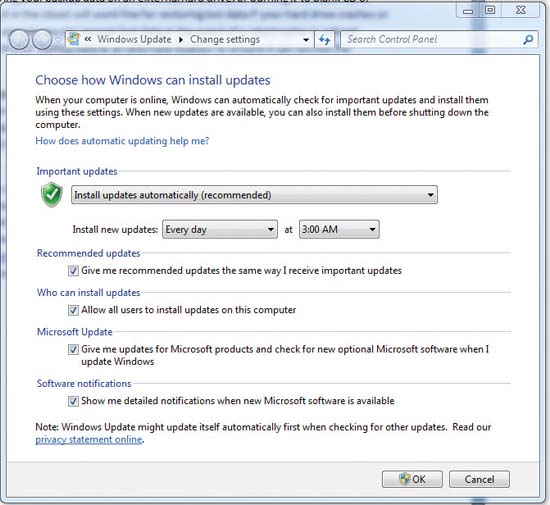
Install all security updates : You should install both a firewall and an anti-malware utility to protect your system, but one of the simplest - and most effective - ways to protect you before the attack is a timely update of your operating system and applications.
Attackers have found that there are some applications of third parties such as Adobe Reader and Adobe Flash that have some weaknesses that can help them exploit to break into your computer. To ensure that you can combat these threats, you can use programs like Secunia Personal Software Inspector to scan your system, identify vulnerable applications, and then install updates. necessary.
It is important to keep up with the new errors that appear for the applications you are using, and apply the appropriate patches immediately.Http://antivirus.about.com/ may be a trusted address so you can collect such information. You can also check sites like http://vil.nai.com/vil/default.aspx to find the latest news about attacks.
Although attacks on third-party applications may face less resistance, some attackers still do not give up on Microsoft products. Windows users need to enable Automatic Updates (or Windows Update) and set up to download and install automatic security updates. Automatic upgrades will keep your operating system as well as Microsoft software such as Internet Explorer and Office applications always have the latest patches.
Page 6: 5 confidentiality
5 security confessions
Sometimes users who are easily misguided about their security status are safe and these are 5 of those misconceptions:
1. I have nothing needed for an attacker to look at .
Ordinary users assume that data on their computers is only valuable to them and not valuable to others, so they do not have a protection plan and are not worried about the computer being hacked. public. However, this is completely wrong. First, instead of stealing data, an attacker often wants to control your own computer so that they can use a compromised computer to spread malware or spam. Thứ hai, bạn có thể nghĩ rằng máy tính của mình không có dữ liệu quan trọng hoặc nhạy cảm nhưng kẻ tấn công có thể sử dụng các thông tin dường như tầm thường, chẳng hạn như tên, địa chỉ, ngày sinh để đánh cắp sự nhận dạng của bạn. Thứ ba, hầu hết các tấn công đều được thực hiện tự động, tìm ra và thỏa hiệp tất cả các hệ thống có lỗ hổng; chúng không phân biệt dựa trên giá trị của mục tiêu.
2. Tôi đã cài đặt phần mềm chống virus do đó máy tính của tôi hoàn toàn an toàn .
Phần mềm chống virus quả thực rất cần thiết, nó là một khởi đầu tốt cho máy tính của bạn, tuy nhiên chỉ có phần mềm này thì hoàn toàn chưa đủ. Một số sản phẩm chống virus không có khả năng phát hiện và khóa chặn spam, các cố gắng giả mạo, spyware hay các tấn công mã độc. Thậm chí ngay cả khi bạn có một phần mềm bảo mật khá toàn diện để bảo vệ chống lại các nhiều mối đe dọa ngoài virus thì bạn vẫn phải nâng cấp nó một cách thường xuyên: Các phần mềm mã độc mới được phát hiện hàng ngày và việc bảo vệ chống lại mã độc chỉ tốt nếu được cập nhật thường xuyên. Cần lưu ý rằng các hãng bảo mật cũng cần có thời gian để bổ sung thêm sự bảo mật đối với một tấn công mới được phát hiện, chính vì vậy phần mềm chống mã độc sẽ không bảo đảm bạn được an toàn trong các tấn công mới hay tấn công zero-day.
3. Bảo mật chỉ là vấn đề khi sử dụng Windows.
Các sản phẩm của Microsoft luôn là mục tiêu của các tấn công bảo mật các vấn đề có liên quan tới bảo mật trong nhiều năm, tuy nhiên điều đó không có nghĩa rằng các hệ điều hành khác và các ứng dụng khác là đứng ngoài. Mặc dù các sản phẩm của Microsoft bi tấn công nhiều nhưng Linux và Mac OS X cũng đã cho thấy cũng có các lỗ hổng và cũng bị tấn công. Khi các hệ điều hành và các trình duyệt khác có được số lượng người dùng đông đảo, khi đó chắc chắn chúng cũng sẽ trở thành các mục tiêu tấn công. Thêm vào đó, các tấn công cũng đang nhắm đến các sản phẩm của các hãng thứ ba ngoài các hệ điều hành, chẳng hạn như Adobe Reader.
4. Router của tôi có tường lửa, do đó máy tính của tôi được bảo vệ .
Tường lửa rất tốt cho việc khóa các truy cập ngẫu nhiên hay trái phép vào mạng của bạn, máy tính được đặt sau tường lửa khi kết nối Internet, do đó nó sẽ được tường lửa bảo vệ trước một loạt các tấn công; tuy nhiên các kẻ tấn công vẫn có thể vòng tránh và qua mặt được tường lửa để tấn công bạn thông qua các cổng truyền tải dữ liệu mở rộng. Mặc định, tường lửa sẽ khóa lưu lượng thông thường chẳng hạn như dữ liệu web và email, tuy nhiên chỉ có một số ít người dùng có thể đánh giá các thiết lập tường lửa và quyết định xem lưu lượng nào cần chặn và lưu lượng nào cho phép đi qua. Thêm vào đó, nhiều tấn công ngày nay dựa trên web hoặc được tổ chức từ một tấn công giả mạo có thể lừa bạn truy cập vào các website mã độc; tường lửa không thể bảo vệ bạn trong những tấn công kiểu này.
5. Tôi chỉ truy cập các website có danh tiếng, do đó tôi hoàn toàn không có gì phải lo ngại về vấn đề bảo mật .
Đây là một nhận thức hoàn toàn sai lầm vì các website nổi tiếng như Apple, CNN, eBay, Microsoft, Yahoo, hay thậm chí cả FBI cũng đều đã bị thỏa hiệp bởi các tấn công cross-site scripting nhằm thu thập thông tin về người dùng hoặc cài đặt phần mềm mã độc lên máy tính của người truy cập.
Các nguồn bảo mật khác
Nhiều website và dịch vụ trên mạng có thể giúp bạn học hỏi về các mối đe dọa bảo mật máy tính hay có thể phân tích máy tính của bạn để bảo đảm nó được sạch sẽ và an toàn.
Hoax Encyclopedia: About.com có một cơ sở dữ liệu khá toàn diện về email và các thư do virus giả mạo. Trước khi bạn chuyển tiếp cảnh báo khẩn cấp sang gia đình hoặc bạn bè của mình, hãy kiểm tra nó trên danh sách này trước.
McAfee Virus Information Library: McAfee duy trì một danh sách chứa các tấn công malware, gồm có các thông tin chi tiết về cách chúng trải rộng như thế nào và cách bạn có thể bảo vệ máy tính của mình ra sao.
Microsoft Consumer Security Support Center: Trong trang này, bạn có thể tìm thấy các giải pháp cho các vấn đề bảo mật nói chung, cũng như các liên kết đến các thông tin và tài nguyên khác cho các sản phẩm bảo mật của Microsoft.
Microsoft Malicious Software Removal Tool: Công cụ này được thiết kế để quét và gỡ bỏ các tấn công hiện hành. Trình quét của nó khá nhỏ và nhanh hơn nhiều so với một trình quét antimalware hoàn chỉnh, tuy nhiên nó chỉ có thể nhận dạng ra các tấn công khó chịu. Microsoft thường phát hành phiên bản mới cho các công cụ– cùng với đó là các bản vá bảo mật – vào ngày thứ Ba trong tuần thứ hai hàng tháng.
Microsoft Security Essentials: Ứng dụng antivirus miễn phí này cung cấp cho bạn sự bảo vệ thời gian thực cho các máy tính Windows trước virus, worms, spyware hay các phần mềm mã độc khác.
PhishTank: Một dự án cộng đồng, PhishTank là một cơ sở dữ liệu chứa các site giả mạo. Bạn có thể tìm kiếm cơ sở dữ liệu để nhận dạng các site giả mạo, có thể bổ sung vào danh sách này bất cứ site giả mạo mới nào mà bạn bắt gặp.
Trend Micro Housecall: Dịch vụ HouseCall của Trend Micro có thể quét trực tuyến máy tính của bạn để phát hiện và gỡ bỏ viruses, worms hay các phần mềm mã độc khác đang cư trú trên nó.
You should read it
- Extend the trial period of AVG Internet Security
- Answer these 5 questions before clicking on any link
- 007 Anti-Spyware counterfeit software removal guide
- Security tool all in one
- How to use Malwarebytes Anti-Malware Home to find, remove spyware, ads, malicious ... on your computer
- Worm can infect Windows system via PDF vulnerability
- Sneaking malware on the Internet
- If infected with this new virus, your chances of data recovery are 0%
May be interested
- How many types of malware do you know and how to prevent them?
 currently, computer criminals use a lot of different malware (malware) to attack the system. here are some of the most common malware types and ways to prevent them.
currently, computer criminals use a lot of different malware (malware) to attack the system. here are some of the most common malware types and ways to prevent them. - What is a NAS hard drive? What is a Surveillance Hard Drive?
 capacity is not the only thing that distinguishes one hard drive from another. there are many types of hard drives on the market. in today's article, tipsmake.com will help readers distinguish between 2 types of hard drives. that is nas drive and surveillance drive.
capacity is not the only thing that distinguishes one hard drive from another. there are many types of hard drives on the market. in today's article, tipsmake.com will help readers distinguish between 2 types of hard drives. that is nas drive and surveillance drive. - Google announced three new Chrome security features
 on sunday, google announced three new security features for chrome that help the browser detect and prevent infringing extensions.
on sunday, google announced three new security features for chrome that help the browser detect and prevent infringing extensions. - Quickly detect bad sectors for hard drives
 bad sector hard drives are always a nightmare for users and at the same time cause the performance of computers to decline. not only that, if the hard drive has bad sectors too much, it will lead to 'pitiful death' for your valuable data.
bad sector hard drives are always a nightmare for users and at the same time cause the performance of computers to decline. not only that, if the hard drive has bad sectors too much, it will lead to 'pitiful death' for your valuable data. - How to check who is using Wifi temple, your home WiFi theft
 the network administrator will guide you how to see who is using wifi temple with wifi management software and some tips to detect if your wifi network connection is being stolen and to find ways to prevent the situation. that again.
the network administrator will guide you how to see who is using wifi temple with wifi management software and some tips to detect if your wifi network connection is being stolen and to find ways to prevent the situation. that again. - 25 interesting things about hard drives you may not know
 all large and small computers have different types of hard drives and most of us know that it's part of the hardware that stores software, music, videos and even the operating system. but maybe there are many things about hard drives that you don't know, let's discover 25 interesting things later.
all large and small computers have different types of hard drives and most of us know that it's part of the hardware that stores software, music, videos and even the operating system. but maybe there are many things about hard drives that you don't know, let's discover 25 interesting things later. - What is an SSD? Learn about popular types of SSD hard drives
 compared to traditional hdds, ssds have many outstanding advantages. so specifically, what is an ssd hard drive? when should i use an ssd? let's explore!
compared to traditional hdds, ssds have many outstanding advantages. so specifically, what is an ssd hard drive? when should i use an ssd? let's explore! - Analyze DLL hijacking attacks
 in this article, i will show you the vulnerabilities in software architectures that could be vulnerable to dll hijacking, how to detect applications with vulnerabilities and how to prevent them.
in this article, i will show you the vulnerabilities in software architectures that could be vulnerable to dll hijacking, how to detect applications with vulnerabilities and how to prevent them. - Experience gold when choosing to buy an external hard drive
 external hard drive (hdd) has become an indispensable component for office users. however, many people still do not know how to buy them.
external hard drive (hdd) has become an indispensable component for office users. however, many people still do not know how to buy them. - What is Social Engineering? How to prevent Social Engineering?
 social engineering is a type of attack based on human interaction and often involves manipulating things by breaking common security processes, accessing systems and networks to gain financial benefits. main.
social engineering is a type of attack based on human interaction and often involves manipulating things by breaking common security processes, accessing systems and networks to gain financial benefits. main.










 Configure advanced IE settings with Group Policy
Configure advanced IE settings with Group Policy Protect yourself against IE security holes
Protect yourself against IE security holes Determine the geographic location of a PC using Windows 7
Determine the geographic location of a PC using Windows 7 Disable keyboard with Keyboard Shortcut in Windows
Disable keyboard with Keyboard Shortcut in Windows Protect Internet connection via SSH
Protect Internet connection via SSH 7 layers of security every computer should have
7 layers of security every computer should have